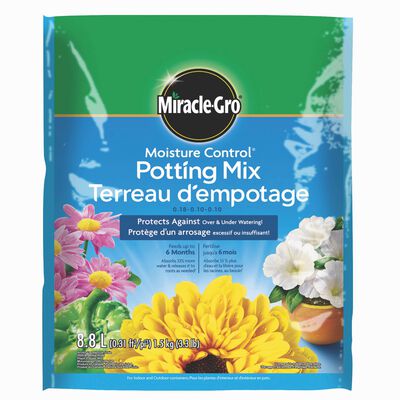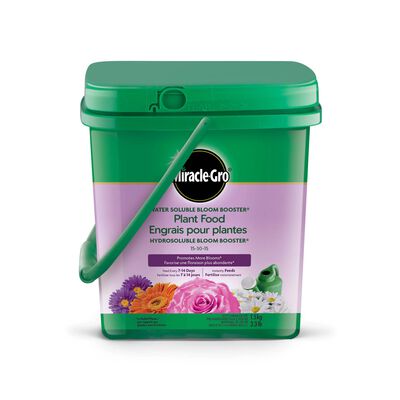
What to Plant in Fall
You might not think of fall as a great time for planting, but it is! The air is cool, the soil is warm, and your garden is just begging to put down new roots. There's less heat, fewer threats of disease and pests, and—for trees and shrubs—a chance to give roots a head start before showtime next spring. Ready to learn about all the cool things you can plant in fall? You've got this!
Veggies & Herbs
Unless you live in a place like Arizona or Florida where seasonal changes don't mean much, the trick to a productive fall veggie and herb garden is to get the estimated first frost date for your region and then count back from there. Chinese cabbage, for instance, needs about 50 days until it's ready to harvest, so it should be planted about 2 months before your first frost date. To get a jumpstart on the season, consider planting strong, vigorous plants instead of waiting for a bunch of seeds to sprout. Also, you can experiment with hardy and semi-hardy cool season crops, such as kale and collard, which can survive a few nips of frost—and may even taste better because of them!
Here's the most valuable tip of all: When you plant your veggies and herbs in Miracle-Gro® soils (think Miracle-Gro® Moisture Control® Potting Mix 0.18-0.10-0.10 for pots, Miracle-Gro® Garden Soil All Purpose 0.09 - 0.05 - 0.07 for in-ground) and feed them with Miracle-Gro® Shake 'N Feed® All Purpose Plant Food 12-4-8 (a great choice for fall edibles), you'll get an amazing harvest to carry you into the cooler months. Who says you can only load your table down with fresh food in summer?
Herbs: cilantro*, chives*, parsley*, sage*, thyme*
Semi-hardy vegetables: beets, carrots, cauliflower*, celery*, Chinese cabbage*, endive, Irish potatoes, lettuce*, radicchio, rutabaga*, Swiss chard*
Hardy vegetables: broccoli*, Brussels sprouts*, cabbage*, collards*, English peas*, kale*, kohlrabi*, leeks*, mustard greens*, radishes*, spinach*, turnips
Flowers
Flowers for fall planting can be divided into 2 categories: annuals for instant autumn bloom gratification and perennial plants (including bulbs) that will flourish for seasons to come. An annual, such as mum, pansy, viola, or ornamental kale, is perfect for a pop of color for the season. A perennial, which can live and thrive for years, should be selected based on your hardiness zone for the coldest temperature that it can withstand.
For maximum color and blooms, plant your annuals and perennials in Miracle-Gro® Moisture Control® Potting Mix 0.18-0.10-0.10 (containers) or Miracle-Gro® Garden Soil All Purpose 0.09 - 0.05 - 0.07 (in-ground) and feed them with Miracle-Gro® Water Soluble Bloom Booster® Plant Food 15-30-15—then prepare to be amazed.
Annuals for fall: mum, pansy, viola, ornamental kale, chrysanthemum, calibrachoa, petunia, purple fountain grass
Perennials with fall color: sedum, coral bells, coreopsis, gaillardia, black-eyed Susan, salvia, allium, sweet flag, blue star
Spring bulbs to plant in fall: crocus, daffodil, narcissus, hyacinth, tulip (find out more about planting spring bulbs in fall right here)
Trees & Shrubs
When you plant them after summer's punishing heat has passed, trees and shrubs can focus on growing roots deep into the soil instead of spending energy on producing new leaves, flowers, and fruit. To create the best environment for roots to grow, improve the soil with Miracle-Gro® Garden Soil All Purpose 0.09 - 0.05 - 0.07 and continue to water your newly planted trees and shrubs until the ground freezes. Mulch around your new trees and shrubs with wood chips, bark chips, or pine straw to help protect against the coming cold (but leave a little space between mulch and plants). Then, in the spring, give roots a follow-up feast by poking a few Miracle-Gro® Tree & Shrub Plant Food Spikes into the soil, following guidelines on the label for the size of your plant.
Trees: Chinese pistache, maple, Japanese maple, fruit trees, dogwood, honey locust, linden, pine, spruce
Shrubs: Hydrangea, beautyberry, sweetshrub, blueberry, spirea, viburnum, sumac



